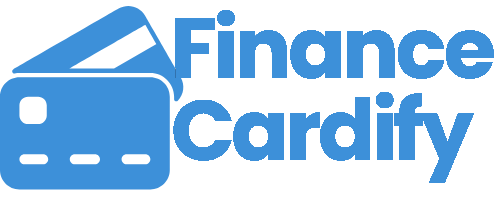Building a robust emergency fund is one of the most important steps you can take toward financial security. While the ideal number can vary based on your personal situation, a $10,000 emergency fund is a powerful and achievable milestone. It’s large enough to cover most unexpected financial crises, from a sudden job loss to major car repairs, providing a significant sense of security.
For many, the number $10,000 can seem daunting, a mountain too high to climb. However, reaching this goal is less about how much you earn and more about a strategic, consistent approach. By focusing on three key strategies—budgeting, income acceleration, and leveraging windfalls—you can systematically build your fund faster than you might think.
Strategy 1: The Budgeting & Automation Approach
This is the foundational strategy and the bedrock of all successful financial plans. It’s all about creating a surplus from your existing income and making the savings process automatic and effortless. This approach builds long-term habits and ensures you’re making consistent progress, even if it’s slow at first.
Action Plan for this Strategy:
- Get a Crystal-Clear View of Your Finances: You can’t manage what you don’t measure. For one month, track every single dollar you earn and spend. Use a spreadsheet, a notebook, or a budgeting app to categorize all your expenses—from rent and groceries to your daily coffee. This exercise will reveal exactly where your money is going and where you can find opportunities to save.
- Define Your “Saving Power”: Once you’ve tracked your spending, you can calculate the gap between your income and your expenses. This gap is your “saving power”—the amount of money you can potentially put toward your emergency fund each month. Even if this number is small, it’s your starting point.
- Find the Hidden Savings: Most people have hidden money in their budget without realizing it. Look for areas you can painlessly reduce or eliminate. Common examples include:
- Reviewing and canceling unused subscriptions (streaming services, gym memberships you don’t use).
- Reducing dining out and take-out orders.
- Shopping for groceries with a list to avoid impulse buys.
- Shopping around for better rates on insurance or cell phone plans.
- Automate Your Contributions: This is the most crucial step. Once you know your saving power, set up an automatic transfer from your checking account to a separate, dedicated savings account. Do this on the day you get paid. This ensures you’re paying yourself first, and the money is set aside before you have a chance to spend it. The best place for an emergency fund is a high-yield savings account that is separate from your main bank, as this adds a layer of friction that discourages impulsive withdrawals.
- Example Timeline: If you can consistently save $200 per month using this method, it will take you 50 months (just over 4 years) to reach your $10,000 goal. While this may seem long, it is a sustainable and reliable path forward.
Strategy 2: The Income Acceleration Approach
While budgeting helps you save money you already have, accelerating your income allows you to reach your goal much faster. This strategy is for those who are willing to put in extra effort to significantly boost their savings rate.
Action Plan for this Strategy:
- Start a Side Hustle: This is the most direct way to accelerate your savings. Find a way to turn a skill or a passion into extra income. The options are endless:
- Service-based: Freelance writing, graphic design, social media management, tutoring, dog walking, or house cleaning.
- Gig economy: Drive for a ride-sharing service, deliver food, or complete tasks on platforms like TaskRabbit.
- Selling goods: Start an Etsy shop for handmade items or buy and resell items from thrift stores.
- Sell Unused Items: Look around your house for items you no longer need. Old electronics, furniture, clothing, books, and even collectibles can be sold for cash. Use online marketplaces like Facebook Marketplace, eBay, or dedicated resale apps to clear clutter and add a lump sum to your fund. This is an excellent way to kickstart your savings.
- Ask for a Raise or Promotion: This is a longer-term strategy, but it can have the biggest impact. Research market rates for your position, document your accomplishments, and be prepared to make a compelling case to your manager. A permanent increase in your income will turbocharge your saving power for the long haul.
- Example Timeline: Let’s say you’ve already found $200 per month in savings from your budget (Strategy 1). By adding a side hustle that brings in an extra $300 per month, your total monthly savings jumps to $500. At this rate, you’ll hit your $10,000 goal in 20 months (under 2 years).
Strategy 3: The “Lump Sum” & Windfall Strategy
This strategy is about taking advantage of irregular, one-time infusions of cash to make massive progress toward your goal. While you can’t rely on these events, when they happen, they can be game-changers.
Action Plan for this Strategy:
- Redirect Your Tax Refund: Instead of seeing your tax refund as “free money” to spend, treat it as an opportunity to supercharge your emergency fund. Having your refund direct-deposited into your savings account can instantly put you thousands of dollars closer to your goal.
- Allocate Work Bonuses: If you receive a work bonus, a significant percentage of it (or the entire thing, if you can manage it) should go directly into your emergency fund. A single bonus can easily knock out a quarter or even half of your goal, completely resetting your timeline.
- Turn a “No-Spend Challenge” into a Lump Sum: For one month, challenge yourself to only spend money on essential bills and groceries. Cut out all non-essential purchases like dining out, shopping, and entertainment. The money you save can then be deposited as a lump sum at the end of the month, giving you a powerful boost. This strategy works because it’s a short-term, intensive effort that yields immediate results.
- Example Timeline: Imagine you’ve been saving $200 per month (Strategy 1) and have managed to save $2,400 in a year. You then receive a $2,000 tax refund and a $3,000 work bonus. By putting these windfalls directly into your fund, you’ve instantly added $5,000 to your savings. In just one year, you’ve gone from $0 to $7,400, bringing your final goal within easy reach.
The Most Effective Approach: A Hybrid Strategy
The fastest and most sustainable way to build a $10,000 emergency fund is to use all three strategies in combination.
- The Foundation: Use Strategy 1 (budgeting and automation) as your consistent, non-negotiable base.
- The Accelerator: Use Strategy 2 (income acceleration) to add fuel to the fire, dramatically increasing your monthly savings.
- The Finisher: Use Strategy 3 (windfalls) to hit major milestones and get to your goal faster than you ever thought possible.
Building a $10,000 emergency fund is not a race against others; it’s a commitment to your own financial well-being. By implementing these three strategies, you can turn a daunting goal into a practical, step-by-step project that provides you with the invaluable peace of mind you deserve.





